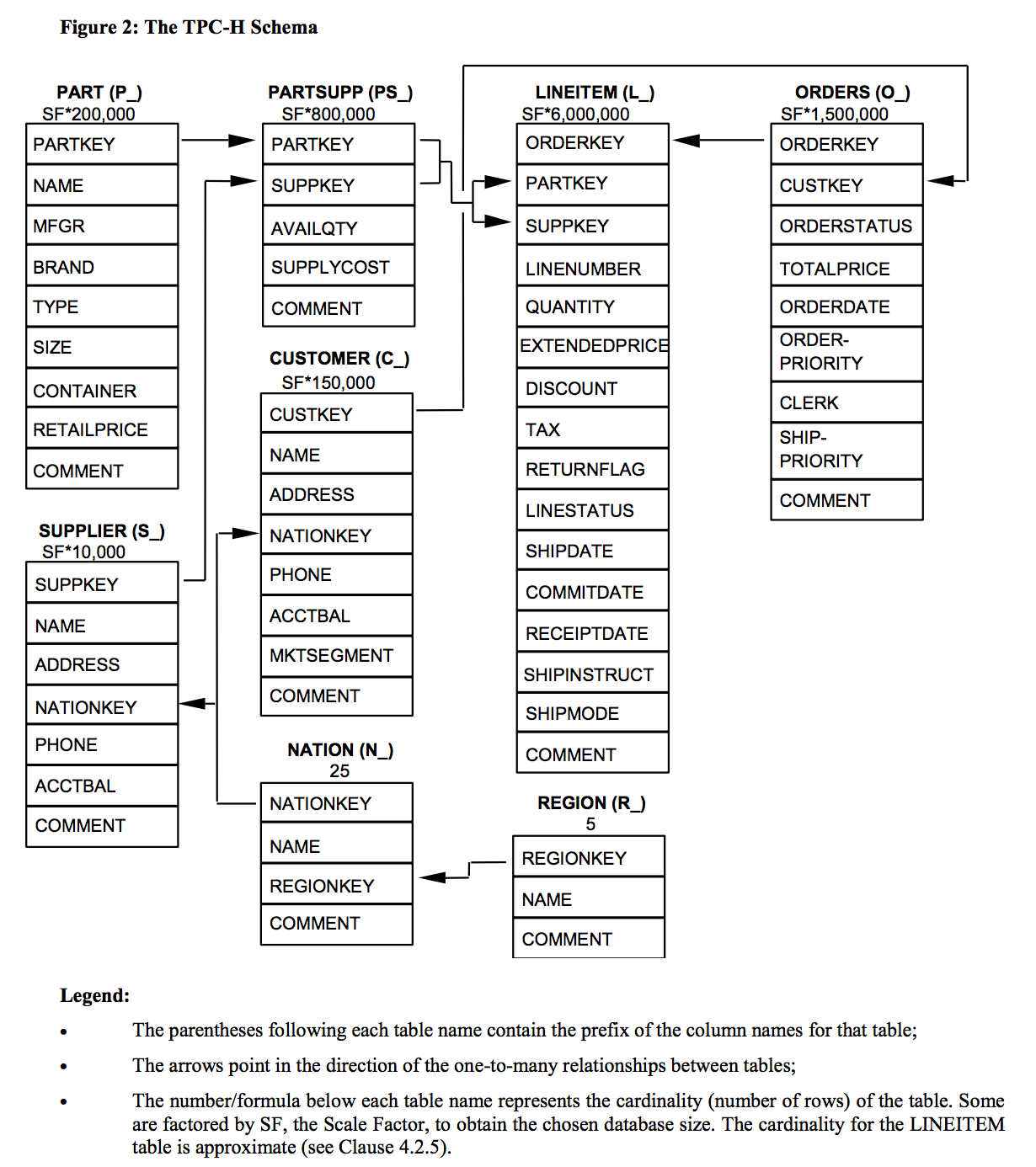Example of using SQL to create a semantic view¶
The following is a complete example of creating a semantic view.
The example uses the TPC-H sample data available in Snowflake. This dataset contains tables that represent a simplified business scenario with customers, orders, and line items.

Creating the semantic view¶
The following statements create the semantic view:
CREATE OR REPLACE SEMANTIC VIEW tpch_analysis
TABLES (
region AS SNOWFLAKE_SAMPLE_DATA.TPCH_SF1.REGION PRIMARY KEY (r_regionkey),
nation AS SNOWFLAKE_SAMPLE_DATA.TPCH_SF1.NATION PRIMARY KEY (n_nationkey),
customer AS SNOWFLAKE_SAMPLE_DATA.TPCH_SF1.CUSTOMER PRIMARY KEY (c_custkey),
orders AS SNOWFLAKE_SAMPLE_DATA.TPCH_SF1.ORDERS PRIMARY KEY (o_orderkey),
lineitem AS SNOWFLAKE_SAMPLE_DATA.TPCH_SF1.LINEITEM PRIMARY KEY (l_orderkey, l_linenumber),
supplier AS SNOWFLAKE_SAMPLE_DATA.TPCH_SF1.SUPPLIER PRIMARY KEY (s_suppkey)
)
RELATIONSHIPS (
nation (n_regionkey) REFERENCES region,
customer (c_nationkey) REFERENCES nation,
orders (o_custkey) REFERENCES customer,
lineitem (l_orderkey) REFERENCES orders,
supplier (s_nationkey) REFERENCES nation
)
FACTS (
region.r_name AS r_name,
nation.n_name AS n_name,
orders.o_orderkey AS o_orderkey,
customer.c_customer_order_count AS COUNT(orders.o_orderkey),
lineitem.line_item_id AS CONCAT(l_orderkey, '-', l_linenumber),
orders.count_line_items AS COUNT(lineitem.line_item_id)
)
DIMENSIONS (
nation.nation_name AS n_name,
customer.customer_name AS c_name,
customer.customer_region_name AS region.r_name,
customer.customer_nation_name AS nation.n_name,
customer.customer_market_segment AS c_mktsegment,
customer.customer_country_code AS LEFT(c_phone, 2),
orders.order_date AS orders.o_orderdate
)
METRICS (
customer.customer_count AS COUNT(c_custkey),
customer.customer_order_count AS SUM(c_customer_order_count),
orders.order_count AS COUNT(o_orderkey),
orders.order_average_value AS AVG(orders.o_totalprice),
orders.average_line_items_per_order AS AVG(orders.count_line_items),
supplier.supplier_count AS COUNT(s_suppkey)
)
;